+Search query
-Structure paper
| Title | Cryo-EM structure of bifunctional malonyl-CoA reductase from Chloroflexus aurantiacus reveals a dynamic domain movement for high enzymatic activity. |
|---|---|
| Journal, issue, pages | Int J Biol Macromol, Vol. 242, Issue Pt 1, Page 124676, Year 2023 |
| Publish date | Jul 1, 2023 |
 Authors Authors | Jae-Woo Ahn / Sangwoo Kim / Jiyeon Hong / Kyung-Jin Kim /  |
| PubMed Abstract | The platform chemical 3-hydroxypropionic acid is used to synthesize various valuable materials, including bioplastics. Bifunctional malonyl-CoA reductase is a key enzyme in 3-hydroxypropionic acid ...The platform chemical 3-hydroxypropionic acid is used to synthesize various valuable materials, including bioplastics. Bifunctional malonyl-CoA reductase is a key enzyme in 3-hydroxypropionic acid biosynthesis as it catalyzes the two-step reduction of malonyl-CoA to malonate semialdehyde to 3-hydroxypropionic acid. Here, we report the cryo-EM structure of a full-length malonyl-CoA reductase protein from Chloroflexus aurantiacus (CaMCR). The EM model of CaMCR reveals a tandem helix architecture comprising an N-terminal (CaMCR) and a C-terminal (CaMCR) domain. The CaMCR model also revealed that the enzyme undergoes a dynamic domain movement between CaMCR and CaMCR due to the presence of a flexible linker between these two domains. Increasing the flexibility and extension of the linker resulted in a twofold increase in enzyme activity, indicating that for CaMCR, domain movement is crucial for high enzyme activity. We also describe the structural features of CaMCR and CaMCR. This study reveals the protein structures underlying the molecular mechanism of CaMCR and thereby provides valuable information for future enzyme engineering to improve the productivity of 3-hydroxypropionic acid. |
 External links External links |  Int J Biol Macromol / Int J Biol Macromol /  PubMed:37146856 PubMed:37146856 |
| Methods | EM (single particle) / X-ray diffraction |
| Resolution | 1.9 - 4.1 Å |
| Structure data | EMDB-34840, PDB-8hjw: 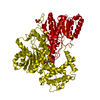 PDB-8i6z: 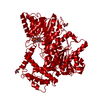 PDB-8i70: |
| Chemicals |  ChemComp-GOL: 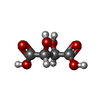 ChemComp-TLA:  ChemComp-HOH: 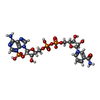 ChemComp-NAP: |
| Source |
|
 Keywords Keywords | OXIDOREDUCTASE / malonyl-CoA reductase (MCR) / bi-functional enzyme / NADPH-dependent reduction / NAD(P)-binding protein / Short-chain reductase |
 Movie
Movie Controller
Controller Structure viewers
Structure viewers About Yorodumi Papers
About Yorodumi Papers




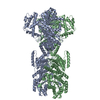

 chloroflexus aurantiacus (bacteria)
chloroflexus aurantiacus (bacteria)